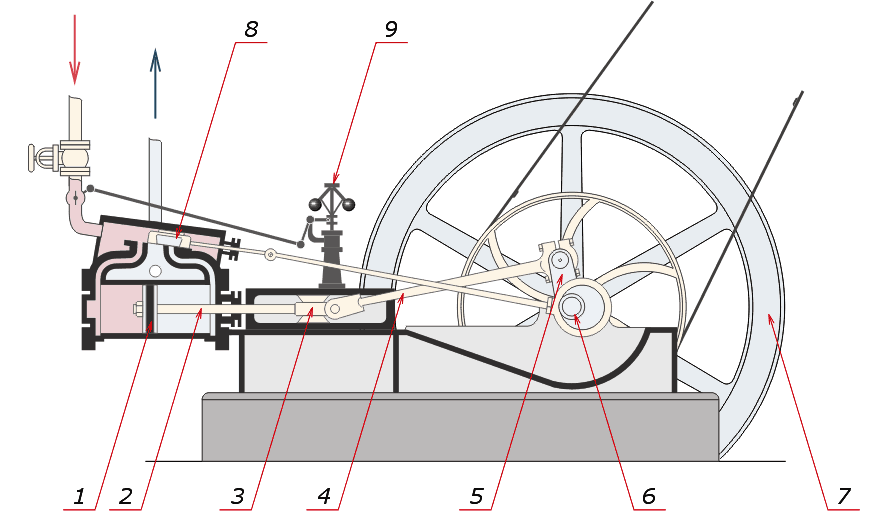Engelsk Train
Indholdsfortegnelse |
The industrial revolution
The industrial revolution was a time when Britain should change in a way that nobody thought. The first Industrial Revolution began in the 18th century in the country of Great Britain, but also spread to the rest of the world. In this time new machines and inventions was made, and these inventions should make a key role in the industrial revolution. Not only because the new machines made work easier and cheaper, but also because they made new way of living. So the industrial revolution was a time when Great Britain made heavy shifts in technology, anomic, cultural and social life. But what made this possible? First of all Britain had a large mound of raw material like iron and coal, which made it possible to build ships, steam engines and railway. The first place where the industrial revolution really took place was in the textile industry, where new machines where made, and these new machines made work much faster and cheaper. And suddenly people moved to the city to start a new life, and hopefully get a job at one of the factories. The steam engine made it possible to make work easier in the factories, but also to transport the goods very cheap and fast. One of the transport methods that should prove to play a key role in the industrial revolution was the railway and the train, and we will in this essay take a closer look at the train and railway, and see which consequences it made in its time.
Early railways
The use of rails for transportation is not something invented during the industrialization. Around 1550, German miners have been using wood tracks for transportation of ore in the mines. In 1603-1604 Huntingdon Beaumont (1560-1624) in partership with Sir Percival Willoughby, build the Wollaton wagonway. The Wollaton wagonway, was a 2 mile long wooden railway, from Strelley, Nottingham to Wollaton. The wagonway were built for transportation of coal, from Strelly to distributions centers in Wollaton. The carries were drawn by horses, wagonways like these often enable one horse to carry between 10-13 tons of coal at once. Wollaton wagonway is the first surface wagonway recorded, before it other underground wagonways may have been built. Wagonways often built inside or near mines, where there world always be something to transport. Later the wood tracks of these wagonways, got an ion overhaul, and later the the tracks were replaced with ion tracks. Whether or not this old wagonways evolved to become the railways of today, or if the railways of today were discovered as an independent invention. Is still a question today.
Discovery of the stream engine
The first real steam engine was made by a Greek and was only used as a toy. But the steam engine was the reasons why the railway was possible. The first steam engines was made to pump water up from the underground in mineshaft, this engine was build by Edward Somerset in 1663. In the start nobody thought that the steam engine also could be used outside the mineshafts, because they where very expensive and very dangerous (They was build on high pressure engines, which could result in an explosion). The early steam engines that was used in the industry, was made by Thomas Newcomen and Thomas Savery in 1712. They made a vacuum build steam engine, which was made so it wasn’t as dangerous to use steam engines as it had been. These first industrial steam engines was often used in the textile industry, because they where not very efficient. But in 1969 James Watt build a new steam engine that was build on Newcomes vacuum engine, but this time much more efficient.

The first train was build on high pressure steam engines because it was much more efficient than vacuum engines.
First locomoties
Richard Trevithick
Mainstream adoption
Consequences
What made Britain so much more powerful in the industrial revolution? Railway, because it made transport even cheaper than on sea. But it also constructed a whole new way of living in Britain. The railway was made I 1900century to transport goods from A to B, so the cost of transporting was as little as possible. And I 1870 a whole network was connecting must of Britain. As said the first trains didn’t transport people, but only goods. This had an even more – Industry – People/political - Peoples meaning and experience with trains

